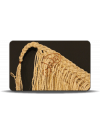In 2012, my Office started a five-year programme of work to find out how well the education system supports Māori students to achieve their full potential. This is the second performance audit report of that programme.
In 2013, the Government updated its Māori education strategy, Ka Hikitia – Managing for Success: 2008-2012. The updated strategy gave greater focus to “educationally powerful” partnerships. These are partnerships where a school’s governors, teachers, students, and families work together to improve students’ overall performance. Some research shows that families and schools should have effective relationships before taking on such partnerships.
Our report presents information that has not been brought together before about relationships between families and schools. We also give examples of practices that build effective relationships. Multiple factors affect these relationships. What people told us raised a lot of questions – to which we do not have all the answers. However, our report provides an opportunity for people to think about their schools and their relationships, to understand the differences between schools, and to work to build and use relationships more effectively.
Our report discusses what is obvious about relationships; they occur between people, not between institutions. As the Māori Advisory and Reference Group told us, it is especially important for Māori to know who the people behind the school gate are, as well as what those people do. It is not surprising then that small practices – such as regularly meeting whānau at the school gate – can affect the quality of relationships.
As part of our audit, we surveyed whānau, and primary and secondary schools, to find out what they thought about their relationships. Our survey focused on the most basic elements expected of any school. About 60% of whānau members who responded to our survey believe that they have effective relationships with their child’s school, whereas about 90% of schools that responded to our survey believe that they have effective relationships with whānau. Despite the difference of perception, these results indicate that some schools have a foundation on which to build “educationally powerful” partnerships.
Whānau with students at decile 1-3 schools and whānau with students at schools with a higher proportion of Māori students on the roll were more likely to say that they had effective relationships with those schools. In contrast, whānau with students at decile 8-10 schools and whānau with students at schools with a lower proportion of Māori students were less likely to say that they had effective relationships with those schools.
There is a risk that some schools do not focus enough on improving their relationships because they think that they have better relationships with whānau than whānau think they do. This risk appears to be greater for high-decile schools and schools with a low proportion of Māori students.
Most Māori students attend schools where they form a small proportion of the total roll. This suggests that a large proportion of Māori students and their whānau could benefit from more effective relationships with schools.
We found that relationships are more effective when there is good communication, there is a willingness to be flexible to enable effective participation, and communities feel listened to. This is not easy and requires constant attention.
Our work on this performance audit is strongly linked to the next performance audit in our programme because effective relationships are clearly an important factor in achieving better outcomes for Māori students. Our next performance audit will look at whether resources in the education sector are delivering effective results for Māori and whether achievement is being appropriately monitored.
I thank the Māori Advisory and Reference Group for continuing to share its experience and wisdom with my Office. I also thank the staff from the many education sector entities who contributed during our performance audit. Last, but not least, I thank the many whānau and school staff members who took the time to take part in our surveys and other fieldwork. In particular, I thank those who hosted my audit team during their fieldwork.
Lyn Provost
Controller and Auditor-General
16 February 2015
Purpose
In 2012, we began a programme of work to answer the question:
How well does the education system currently support Māori students to achieve their full potential and contribute to the future prosperity of New Zealand?
We set out our programme of work in our report Education for Māori: Context for our proposed audit work until 2017. This is our second performance audit in that programme. Our first performance audit in the programme examined how effectively the Ministry of Education (the Ministry) and schools were carrying out Ka Hikitia – Managing for Success: 2008-2012 (Ka Hikitia). Despite some problems, we were optimistic that Ka Hikitia would be successfully implemented.
For this audit, we were going to examine partnerships between schools and whānau. Ka Hikitia was updated in 2013. The updated policy gave greater focus to “educationally powerful” partnerships. These are partnerships where a school’s governors, teachers, students, and families work together to improve a student’s overall performance. Teachers and parents working together can have strong beneficial effects on learning.
Some research shows that schools and families should have effective relationships before taking on “educationally powerful” partnerships. Therefore, instead of examining partnerships between schools and whānau, we decided to look at the strength of relationships between schools and whānau.
In this report, an effective relationship means that whānau are generally satisfied with their relationship with their school and that we have confidence in basic interactions between schools and whānau.

